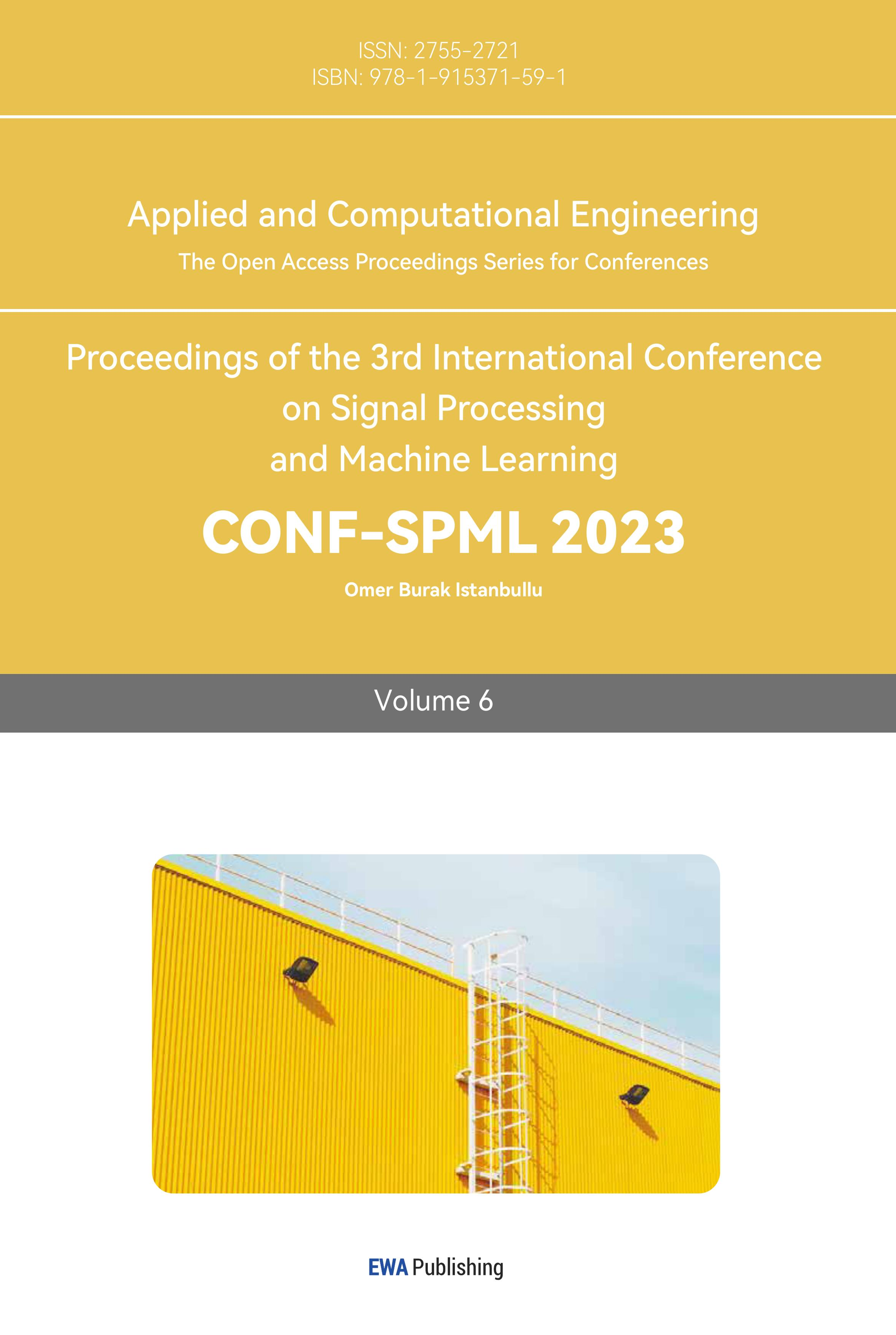References
[1]. Cohen, M. F., Wallace, J. R., & Hanrahan, P. (1993). Radiosity and realistic image synthesis. Morgan Kaufmann.
[2]. Mildenhall, B., Srinivasan, P. P., Tank, M., Barron, J. T., Ramamoorthi, R., & Ng, R. (2021). Nerf: Representing scenes as neural radiance fields for view synthesis. Communications of the ACM, 65(1), 99-106.
[3]. Yu, A., Fridovich-Keil, S., Tancik, M., Chen, Q., Recht, B., & Kanazawa, A. (2021). Plenoxels: Radiance fields without neural networks. arXiv preprint arXiv:2112.05131.
[4]. [4]Ramamoorthi, R., & Hanrahan, P. (2001, August). An efficient representation for irradiance environment maps. In Proceedings of the 28th annual conference on Computer graphics and interactive techniques (pp. 497-500).
[5]. Sloan, P. P., Kautz, J., & Snyder, J. (2002, July). Precomputed radiance transfer for real-time rendering in dynamic, low-frequency lighting environments. In Proceedings of the 29th annual conference on Computer graphics and interactive techniques (pp. 527-536).
[6]. Chen, W., Ling, H., Gao, J., Smith, E., Lehtinen, J., Jacobson, A., & Fidler, S. (2019). Learning to predict 3d objects with an interpolation-based differentiable renderer. Advances in Neural Information Processing Systems, 32.
[7]. Crassin, C., Neyret, F., Sainz, M., Green, S., & Eisemann, E. (2011, September). Interactive indirect illumination using voxel cone tracing. In Computer Graphics Forum (Vol. 30, No. 7, pp. 1921-1930). Oxford, UK: Blackwell Publishing Ltd.
[8]. Pharr, M., Jakob, W., & Humphreys, G. (2016). Physically based rendering: From theory to implementation. Morgan Kaufmann.
[9]. Kaplanyan, A., & Dachsbacher, C. (2010, February). Cascaded light propagation volumes for real-time indirect illumination. In Proceedings of the 2010 ACM SIGGRAPH symposium on Interactive 3D Graphics and Games (pp. 99-107).
[10]. Learning Attentions: Residual Attentional Siamese Network for High Performance Online Visual Tracking
Cite this article
Yang,R. (2023). Reconstruction of radiance field with neural network for real-time rendering. Applied and Computational Engineering,6,1466-1475.
Data availability
The datasets used and/or analyzed during the current study will be available from the authors upon reasonable request.
Disclaimer/Publisher's Note
The statements, opinions and data contained in all publications are solely those of the individual author(s) and contributor(s) and not of EWA Publishing and/or the editor(s). EWA Publishing and/or the editor(s) disclaim responsibility for any injury to people or property resulting from any ideas, methods, instructions or products referred to in the content.
About volume
Volume title: Proceedings of the 3rd International Conference on Signal Processing and Machine Learning
© 2024 by the author(s). Licensee EWA Publishing, Oxford, UK. This article is an open access article distributed under the terms and
conditions of the Creative Commons Attribution (CC BY) license. Authors who
publish this series agree to the following terms:
1. Authors retain copyright and grant the series right of first publication with the work simultaneously licensed under a Creative Commons
Attribution License that allows others to share the work with an acknowledgment of the work's authorship and initial publication in this
series.
2. Authors are able to enter into separate, additional contractual arrangements for the non-exclusive distribution of the series's published
version of the work (e.g., post it to an institutional repository or publish it in a book), with an acknowledgment of its initial
publication in this series.
3. Authors are permitted and encouraged to post their work online (e.g., in institutional repositories or on their website) prior to and
during the submission process, as it can lead to productive exchanges, as well as earlier and greater citation of published work (See
Open access policy for details).
References
[1]. Cohen, M. F., Wallace, J. R., & Hanrahan, P. (1993). Radiosity and realistic image synthesis. Morgan Kaufmann.
[2]. Mildenhall, B., Srinivasan, P. P., Tank, M., Barron, J. T., Ramamoorthi, R., & Ng, R. (2021). Nerf: Representing scenes as neural radiance fields for view synthesis. Communications of the ACM, 65(1), 99-106.
[3]. Yu, A., Fridovich-Keil, S., Tancik, M., Chen, Q., Recht, B., & Kanazawa, A. (2021). Plenoxels: Radiance fields without neural networks. arXiv preprint arXiv:2112.05131.
[4]. [4]Ramamoorthi, R., & Hanrahan, P. (2001, August). An efficient representation for irradiance environment maps. In Proceedings of the 28th annual conference on Computer graphics and interactive techniques (pp. 497-500).
[5]. Sloan, P. P., Kautz, J., & Snyder, J. (2002, July). Precomputed radiance transfer for real-time rendering in dynamic, low-frequency lighting environments. In Proceedings of the 29th annual conference on Computer graphics and interactive techniques (pp. 527-536).
[6]. Chen, W., Ling, H., Gao, J., Smith, E., Lehtinen, J., Jacobson, A., & Fidler, S. (2019). Learning to predict 3d objects with an interpolation-based differentiable renderer. Advances in Neural Information Processing Systems, 32.
[7]. Crassin, C., Neyret, F., Sainz, M., Green, S., & Eisemann, E. (2011, September). Interactive indirect illumination using voxel cone tracing. In Computer Graphics Forum (Vol. 30, No. 7, pp. 1921-1930). Oxford, UK: Blackwell Publishing Ltd.
[8]. Pharr, M., Jakob, W., & Humphreys, G. (2016). Physically based rendering: From theory to implementation. Morgan Kaufmann.
[9]. Kaplanyan, A., & Dachsbacher, C. (2010, February). Cascaded light propagation volumes for real-time indirect illumination. In Proceedings of the 2010 ACM SIGGRAPH symposium on Interactive 3D Graphics and Games (pp. 99-107).
[10]. Learning Attentions: Residual Attentional Siamese Network for High Performance Online Visual Tracking









